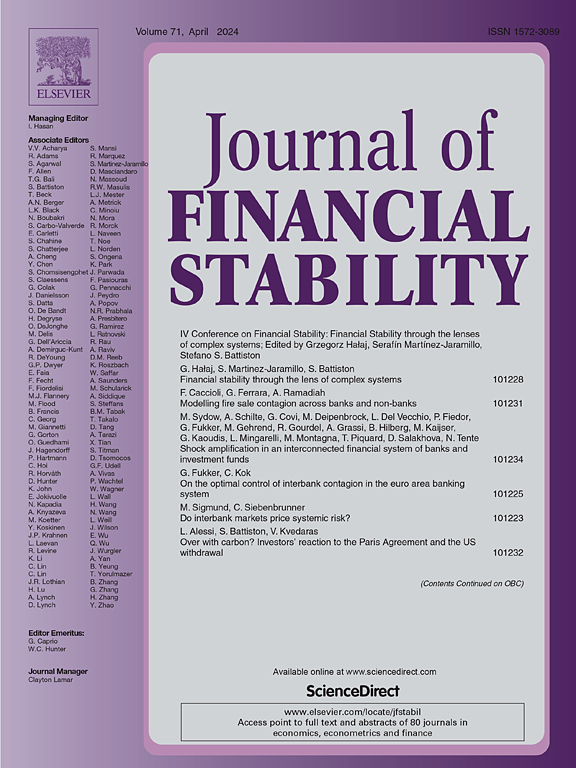小额银行存款比大额银行存款更划算吗?传染与普惠金融的三个事件研究
IF 4.2
2区 经济学
Q1 BUSINESS, FINANCE
引用次数: 0
摘要
与普惠金融相关的银行存款有多容易受到传染?为了评估这种敏感性,我们分析了菲律宾三个重大银行倒闭事件前后的存款行为。我们利用独特的数据集进行事件研究,该数据集可以按城镇级别的大小分解沉积物。我们表明,在银行关闭前4-5个季度,小额和大额存款都被提取。我们利用小额存款和大额存款之间的这种区别来测试传染的可能性。应用差中差回归,我们发现了传染的证据:一家大银行的关闭导致大大小小的存款人在邻近城镇的银行提款。这是三个事件中的两个事件的情况,当数据被集中收集时也是如此。信息市场的存在影响到存款保险作为存款人的安全网和银行的约束工具。银行还需要考虑流动性问题。无论如何,我们始终发现小储户的行为与大储户的行为没有什么不同。因此,如果普惠金融是关于获得银行存款,那么它不太可能加剧或减轻系统性风险。本文章由计算机程序翻译,如有差异,请以英文原文为准。
Do small bank deposits run more than large ones? Three event studies of contagion and financial inclusion
How susceptible to contagion are bank deposits associated with financial inclusion? To assess this susceptibility, we analyze the behavior of deposits around three significant events of bank failure in the Philippines. We conduct the event studies with the advantage of a unique dataset that disaggregates deposits by size at the town level. We show that both small and large deposits are withdrawn up to 4–5 quarters before the bank’s closure. We take advantage of this distinction between small and large deposits to test for contagion. Applying difference-in-difference regressions, we find evidence of contagion: the closure of a large bank leads to withdrawals at banks in neighboring towns by depositors both large and small. This is the case for two of the three events, and when the data is taken collectively. That there is a market for information affects deposit insurance as a safety net for depositors and as a disciplining tool for banks. There are also liquidity considerations that banks need to consider. In any case, we consistently find the behavior of small depositors to be no different from that of large depositors. Hence, if financial inclusion is about access to bank deposits, it is not likely to heighten systemic risks nor mitigate them.
求助全文
通过发布文献求助,成功后即可免费获取论文全文。
去求助
来源期刊

Journal of Financial Stability
Multiple-
CiteScore
7.70
自引率
9.30%
发文量
78
审稿时长
34 days
期刊介绍:
The Journal of Financial Stability provides an international forum for rigorous theoretical and empirical macro and micro economic and financial analysis of the causes, management, resolution and preventions of financial crises, including banking, securities market, payments and currency crises. The primary focus is on applied research that would be useful in affecting public policy with respect to financial stability. Thus, the Journal seeks to promote interaction among researchers, policy-makers and practitioners to identify potential risks to financial stability and develop means for preventing, mitigating or managing these risks both within and across countries.
 求助内容:
求助内容: 应助结果提醒方式:
应助结果提醒方式:


